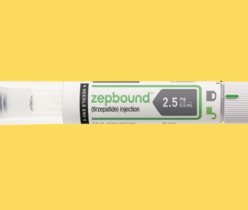And your body weight alone isn’t actually an accurate indicator of your health. You’ve no doubt heard of the Body Mass Index (or BMI), which estimates total body fat based on overall weight and height. Recent research — notably data from the University of Pennsylvania — has confirmed that BMI is a less accurate indicator of health than many once thought, largely because BMI can’t tell you if that overall weight is fat, muscle, or water.
Rather than fretting about the number on the scale, try one (or all) of these four alternatives to track your health on a college budget.
Waist-to-height ratio (WHtR)
The cousin of the BMI, waist-to-height ratio compares — you guessed it — waist circumference to height, rather than overall weight to height squared. WHtR is more accurate than BMI because it takes central fat into consideration. Central fat is important because it collects around the organs in your midsection and has been closely linked to conditions such as heart disease. In fact, researchers who presented at the 2012 European Congress on Obesity analyzed 31 separate studies and found that WHtR was more accurate than BMI at predicting certain diseases. To find your WHtR, grab a tape measure and measure your height and waist (halfway between your bottom rib and hipbone), then divide your waist circumference by your height. Young adults should try to maintain a WHtR of at least 0.5 or lower.
Measurements
Related to the WHtR are circumference measurements of various body parts, such as the arm, waist and leg. Many people use such measurements to track their fitness or weight loss progress throughout a program, as it is a good indicator of localized change. For example, if the number on the scale is going up but your waist measurement is going down, then you’re probably losing fat and building lean muscle instead of gaining weight. The Navy has also developed a calculation that estimates body fat percentage based on just a couple circumference measurements. So grab a soft, flexible sewing tape (such as this retractable one) and get measuring.
Resting heart rate (RHR)
The number of times your heart beats per minute (BPM) is a great indication of how healthy and efficient your cardiovascular system is — the stronger your cardiovascular system, the lower your risk for heart disease and other similar conditions. Resting heart rate is your BPM when your body is completely at rest, so try to find your rate first thing in the morning if possible, before you get out of bed. To take your pulse, place your index and middle finger on your neck or wrist and count the number of beats for thirty seconds, then multiply by two to get your BPM (or try an app such as Instant Heart Rate if you don’t have a stopwatch handy). Average RHR is between 60 and 100 beats a minute, but it can drop as low as 40 beats for very fit very people. Generally, the healthier you are, the lower your RHR will be.
Skinfold Calipers
Skinfold calipers work by measuring subcutaneous fat, or fat that sits directly under the skin, and estimates total body fat based on that. To use calipers, gently pinch a fold of skin and squeeze the calipers around it until they click. To find a good average, you should measure five to seven different places on your body, such as your back and stomach, and plug the numbers into the manufacturer’s recommended equation. Consistency is key with calipers, so take all measurements on the same side of your body and get a helper if you can’t reach a spot on your own. There are many different kinds of calipers available, but a good start is the Accu-Measure Fitness 3000 (instructions here).
Kara Sherrer is a junior at Vanderbilt University, double majoring in English and Marketing & Communications. She is also the web editor of The Vanderbilt Hustler and a consultant at the Vanderbilt Writing Studio. She can be reached by email at kara@karasherrer.com or on Twitter @KaraSherrer.
This story originally appeared on the USA TODAY College blog, a news source produced for college students by student journalists. The blog closed in September of 2017.

